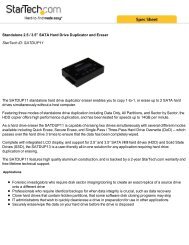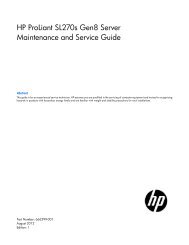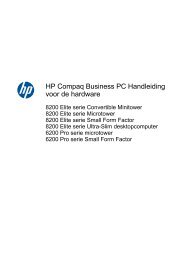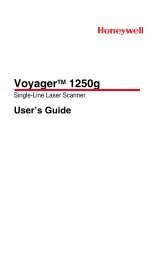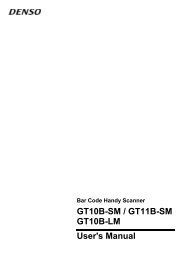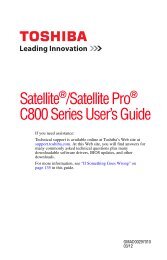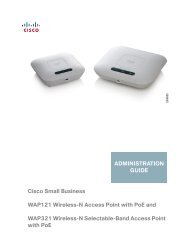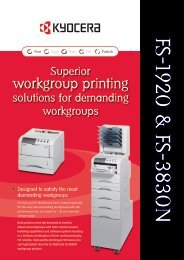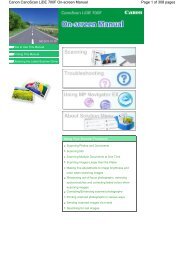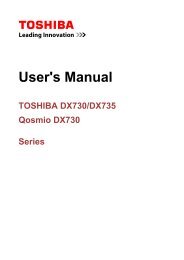User Manual - Etilize
User Manual - Etilize
User Manual - Etilize
Create successful ePaper yourself
Turn your PDF publications into a flip-book with our unique Google optimized e-Paper software.
Chapter 3. Configuring the server<br />
The following configuration programs and utilities come with the server:<br />
v Setup utility<br />
The UEFI (formerly BIOS) Setup Utility program is part of the basic input/output<br />
system firmware. Use it to change interrupt request (IRQ) settings, change the<br />
startup-device sequence, set the date and time, and set passwords. For<br />
information about using this program, see “Using the Setup utility” on page 68.<br />
v Boot Manager program<br />
The Boot Manager program is part of the server firmware. Use it to override the<br />
startup sequence that is set in the Setup utility and temporarily assign a device to<br />
be first in the startup sequence. For more information about using this program,<br />
see “Using the Boot Manager program” on page 73.<br />
v IBM ServerGuide Setup and Installation CD<br />
The ServerGuide program provides software-setup tools and installation tools<br />
that are designed for the server. Use this CD during the installation of the server<br />
to configure basic hardware features, such as an integrated SAS/SATA controller<br />
with RAID capabilities, and to simplify the installation of your operating system.<br />
For information about using this CD, see “Using the ServerGuide Setup and<br />
Installation CD” on page 74.<br />
v Integrated management module<br />
Use the integrated management module (IMM) for configuration, to update the<br />
firmware and sensor data record/field replaceable unit (SDR/FRU) data, and to<br />
remotely manage a network. For information about using the IMM, see “Using the<br />
integrated management module” on page 76.<br />
v VMware ESXi embedded hypervisor<br />
The VMware ESXi embedded hypervisor is available on the server models that<br />
come with an installed the USB embedded hypervisor flash device. The USB<br />
flash device is installed in the USB connector on the system board. Hypervisor is<br />
virtualization software that enables multiple operating systems to run on a host<br />
system at the same time. For more information about using the embedded<br />
hypervisor, see “Using the embedded hypervisor” on page 77.<br />
v Remote presence capability and blue-screen capture<br />
The remote presence and blue-screen capture feature are integrated into the<br />
integrated management module (IMM). The virtual media key is required to<br />
enable the remote presence functions. When the optional virtual media key is<br />
installed in the server, it activates the remote presence functions. Without the<br />
virtual media key, you will not be able to access the network remotely to mount<br />
or unmount drives or images on the client system. However, you will still be able<br />
to access the Web interface without the virtual media key. You can order the<br />
optional IBM Virtual Media Key, if one did not come with your server. For more<br />
information about how to enable the remote presence function, see “Enabling the<br />
remote presence feature” on page 79.<br />
v Ethernet controller configuration<br />
For information about configuring the Ethernet controller, see “Configuring the<br />
Gigabit Ethernet controller” on page 80.<br />
v LSI Configuration Utility program<br />
Use the LSI Configuration Utility program to configure the integrated SAS/SATA<br />
controller with RAID capabilities and the devices that are attached to it. For<br />
information about using this program, see “Using LSI Configuration Utility<br />
program” on page 81<br />
© Copyright IBM Corp. 2010 67




